Order Passeriformes Genus Cicinnurus Higher classification Cicinnurus | Phylum Chordata Family Paradisaeidae Scientific name Cicinnurus respublica Rank Species | |
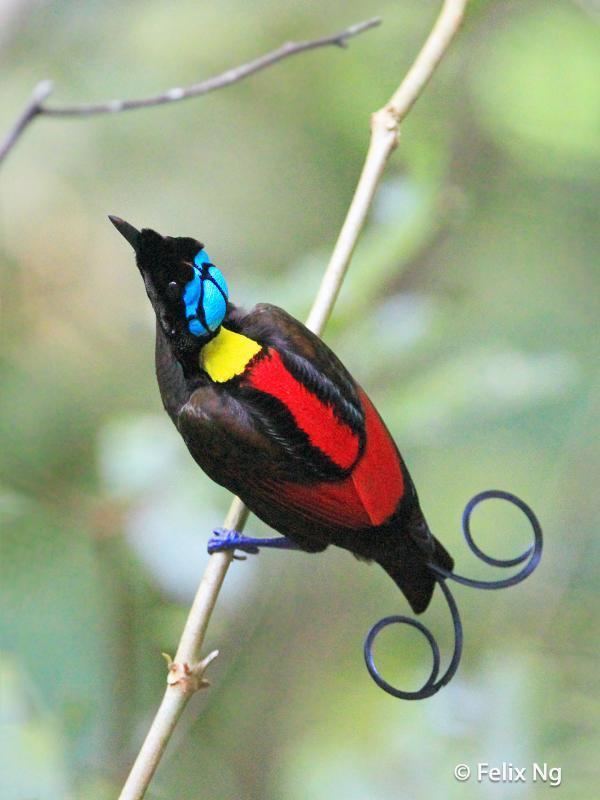 | ||
Similar Bird‑of‑paradise, Cicinnurus, Bird, King of Saxony bird‑of‑paradise, Red bird‑of‑paradise | ||
Wilson s bird of paradise
The Wilson's bird-of-paradise (Cicinnurus respublica) is a species of passerine bird of the family Paradisaeidae.
Contents
- Wilson s bird of paradise
- Wilson s bird of paradise a full spectrum
- Nomenclature
- Distribution
- Habitat
- Description
- Diet
- Rituals of seduction
- References
The first footage of the Wilson's bird-of-paradise ever to be filmed was recorded in 1996 by David Attenborough for the BBC documentary Attenborough in Paradise. He did so by dropping leaves on the forest floor, which irritated the bird into clearing them away.
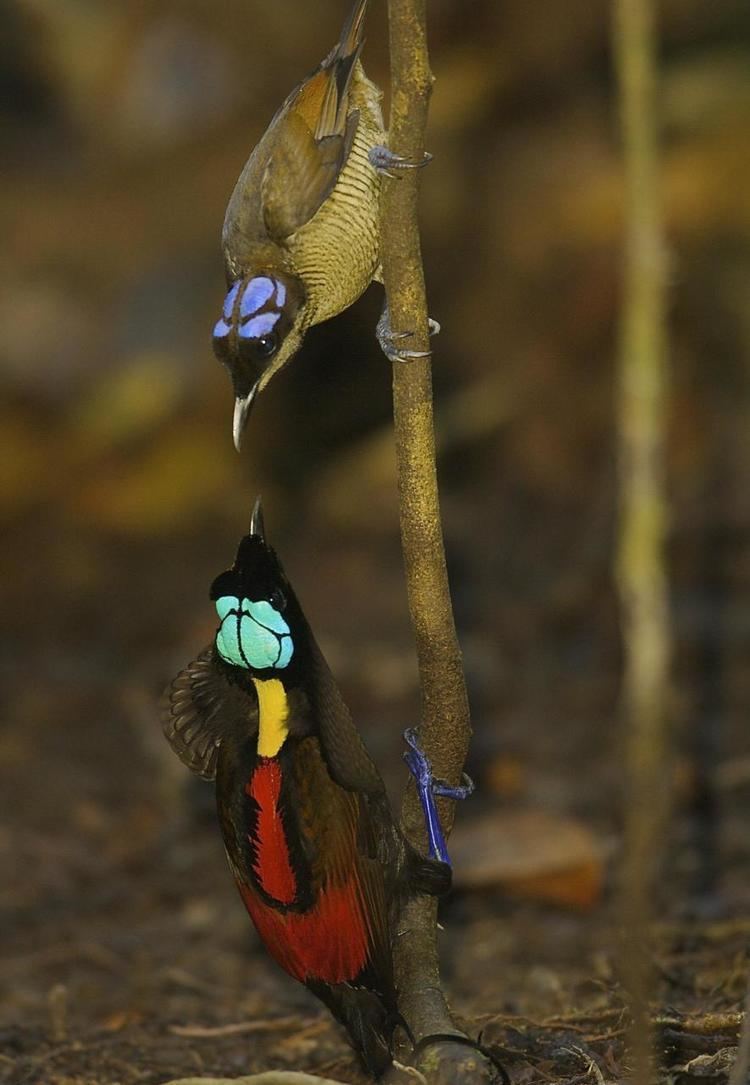
Wilson s bird of paradise a full spectrum
Nomenclature
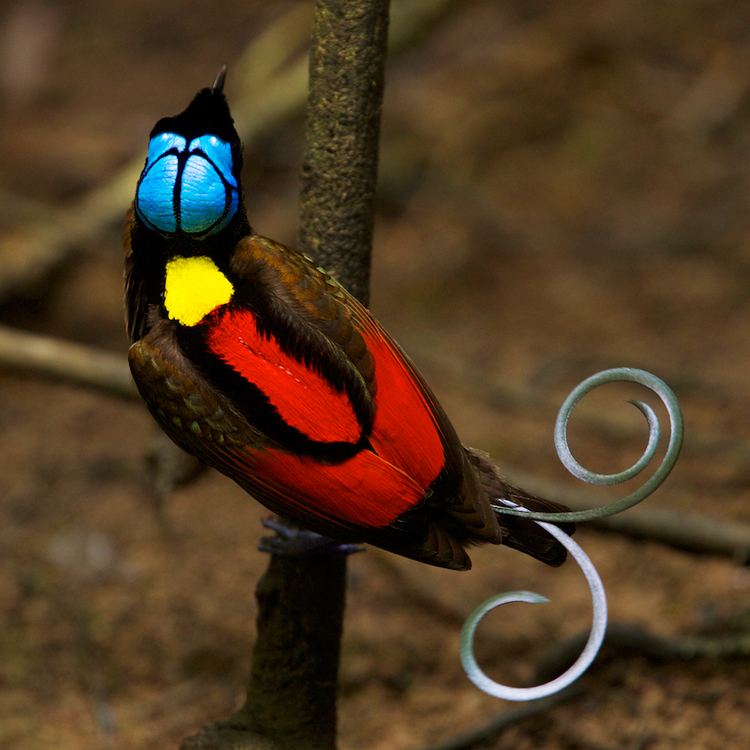
The controversial scientific name respublica of this species was given by Charles Lucien Bonaparte, Napoleon's nephew and a republican idealist. The habit of zoologists at that time to dedicate newly discovered species to some king, queen or aristocrat deeply irritated him. In order to assert his convictions, he chosed to name respublica this species to honor the republic and not the royalty.
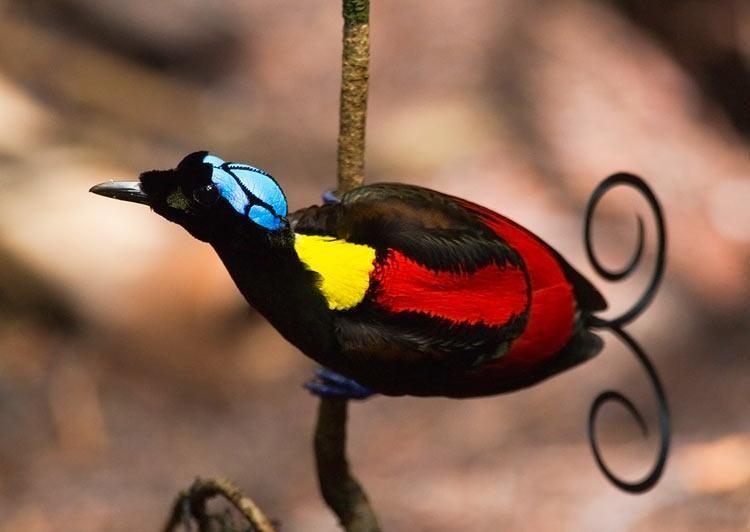
Charles Lucien Bonaparte described the bird from a badly damaged trade specimen purchased by British ornithologist Edward Wilson. In doing so, he beat John Cassin, who wanted to name the bird in honour of Wilson, by several months. Thirteen years later, in 1863, the German zoologist Heinrich Agathon Bernstein discovered the home grounds of the Wilson's bird-of-paradise in Waigeo Island.
Distribution
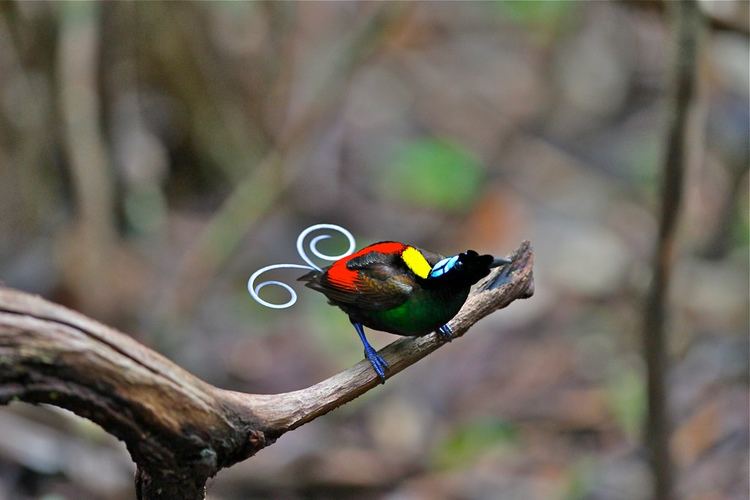
An Indonesian endemic, the Wilson's bird-of-paradise is distributed to the hill and lowland rainforests of Waigeo and Batanta Islands off West Papua.
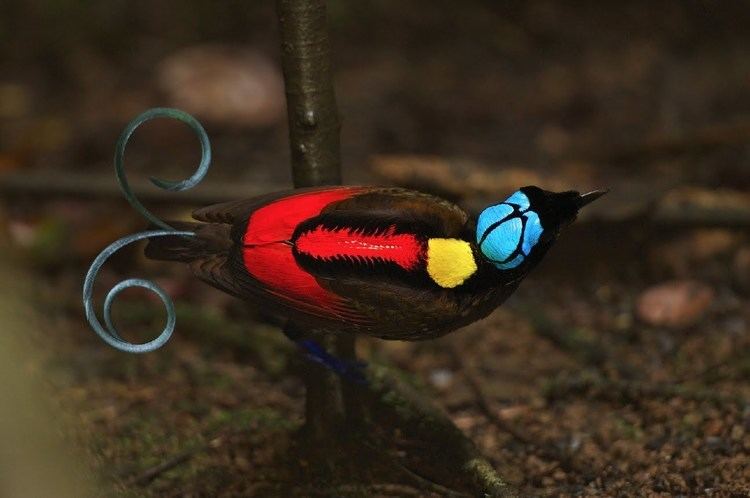
Due to ongoing habitat loss, limited range and exploitation, the Wilson's bird-of-paradise is evaluated as Near Threatened on the IUCN Red List of Threatened Species. It is listed on Appendix II of the Convention on International Trade in Endangered Species of Wild Fauna and Flora (CITES).
Habitat
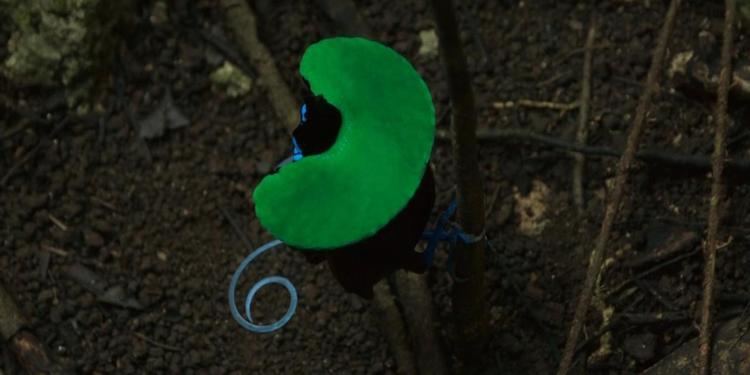
Its preferred habitat is the hill forest at 300 m of altitude, more rarely the lowland rainforest and the middle mountain forest. (Frith & Frith 2009)
Description
Wilson's bird-of-paradise is rather small. Males can reach a length of 16 centimetres (6.3 in) (21cm including central rectrices) and a weight of 53–67 g., while females can reach a length of 16 cm,but a weight of 52–60 g. The male is a red and black bird-of-paradise, with a yellow mantle on its neck, light green mouth, rich blue feet and two curved violet tail feathers. The head is naked blue, with a black double cross pattern on it. The female is a brownish bird with bare blue crown.
In the field, the blue bare skin on the crown of the bird's head is so vivid that it is clearly visible by night; the deep scarlet back and velvet green breast are lush, the curlicue tail gleaming bright silver.
Diet
Their diet consists of fruits, insects, arthropods and other small invertebrates.
Rituals of seduction
Males of these birds clear an area of rainforest to create a 'display court'. Then they perform an elaborate mating dance to impress a potential mate. The male usually exhibits the attractive breast shield and accompanies the mating dance with song and calls.
